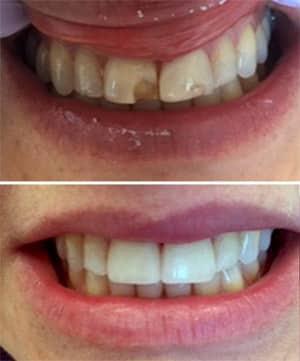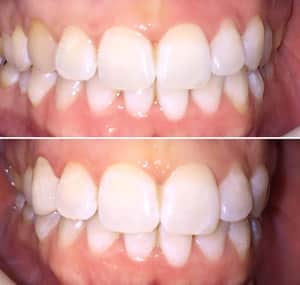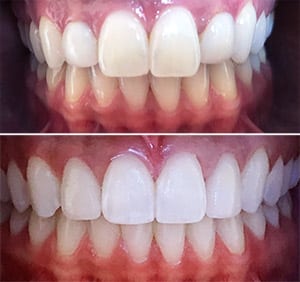Trust Us For High-Quality Bridges & Crowns In Randolph, NJ & Surrounding Areas
If you have tooth decay, cracked teeth, or other damage to your teeth, a dental crown or dental bridge may be the right solution for you. These procedures can restore the function and aesthetic appeal of your teeth and prevent them from becoming further damaged—they can function as both restorative dentistry and cosmetic dentistry procedures. Seidner Dentistry offers comprehensive care, including top-notch bridges and crowns, in Randolph, NJ. We can help renew your smile and preserve your dental health.
What Does A Dental Crown Do?
When tooth decay or damage becomes so extensive that it cannot be addressed with a regular filling or other restorative option, a dental crown is a great alternative. A crown is a simple way to restore the shape, health, and strength of your tooth. Dental crowns (also referred to as dental caps) may be recommended in order to:
- Protect a weak tooth from breaking, such as after a root canal
- Restore a broken tooth or cracked tooth
- Support and cover a tooth that has a large filling
- Make a cosmetic change when a filling or laminate is not enough to protect the tooth
- Be part of a dental bridge when there is a missing tooth

Your dentist at Seidner Dentistry & Associates will be able to evaluate your teeth to determine if you are a candidate for a dental crown. A dental crown is recommended most often when there is no other option that can restore the function of your tooth. After having your dental crown or cap completed, you will be pleased to see it resembles your natural tooth.
How Does The Process Work?
Preparing a tooth for a crown usually requires two visits. At your first appointment, your dentist will prepare the tooth by removing any decay and reducing it in size so that a temporary crown can be placed on the tooth while your permanent crown is designed for you at a dental lab. At your next visit, your new dental crown will be cemented permanently. During this visit, you will be able to see the color of your permanent crown and make sure you are happy with how it matches your natural teeth.

At Seidner Dentistry & Associates, your dentists can also have your crown completed in one day. Imagine coming into our dental office to receive a crown and walking out the same day with a strong, durable, and cosmetically beautiful crown already in place. With our digital crown system, you can often achieve the same quality and aesthetics in a single visit.
In the process, we will digitally scan your teeth, and the information and data of the scan will be sent to an in-office milling machine that will create your crown—usually the same day (as opposed to sending a mold to a laboratory and waiting for the technicians to fit your crown into their schedule). This works great for patients who break a tooth just before upcoming travel dates. Should you choose to have your dental crown done in one day, please discuss this beforehand with our office team.
Dental Bridges Vs. Crowns
Dental crowns are restorations that replace single damaged or decayed teeth. They are designed to look just like your natural teeth, so they blend in seamlessly and give you a full, bright smile. Crowns are affixed to just one tooth. Bridges, on the other hand, can replace multiple teeth at once and are anchored to the neighboring teeth for support.
You must have enough tooth structure left to be a candidate for a crown, as the restoration needs to be supported by natural tooth material. Dental bridges can be a good solution for people who are missing multiple teeth or do not have enough tooth structure left for a crown. Our dentist will be able to evaluate your case and recommend the best course of action to restore your smile.

Dental Bridge Vs. Implant
Having a dental bridge installed is an excellent option for replacing a missing tooth or a series of missing teeth. As was noted above, in most cases, the ends of a bridge consist of dental crowns, which are placed over the remaining teeth on each side of the gap.
Implants, on the other hand, are titanium screws that are permanently anchored to the jawbone surgically. After the posts are stable and fully fused to the jawbone, our dentist screws a crown onto each implant to create a flawless, complete smile.
To be a candidate for implants, your jawbone must be strong and healthy enough to support the screw, as implants function like normal teeth and put a lot of pressure on the jawbone. Additionally, dental implants are more of an investment than bridges—however, they generally never need to be replaced. Our dentist will help you find the perfect solution for your unique case.
I Need A Crown. Does That Make Me Royalty?
Article Written By Our Dental Hygienist, Julia Guerra
Though you won’t become a member of some centuries-old monarchy, this coronation will help protect some of your most faithful servants…that is, your teeth! A dental crown is most often recommended to restore the shape, health, and strength of a tooth. And in many cases, a crown may be the only option available to reestablish function. So before proceeding with this adornment, let’s explore what is behind your “crowning achievement”. A dental crown or “cap” is placed over the part of the tooth that is visible above the gum line. Most crowns today are made of porcelain and designed to match the shape and color of the existing permanent teeth.
There are several reasons why your dentist may diagnose the need for a crown. They are recommended to protect a weak tooth from further damage and cracking. Visible fracture lines in the enamel are an indication of a tooth that is at a greater risk of breaking, and a crown will help hold these pieces together. Teeth with large fillings and thin enamel walls are also at risk of breakage with regular use due to the delicate condition of the enamel, which is sometimes just a shell of its original thickness. A tooth with an existing large filling that develops additional decay may be required to have a crown instead of a replacement filling due to the undermining nature of decay and the further loss of tooth structure. Also, because of the expansion and retraction properties of old amalgam alloys, or silver fillings, they can begin to act more like a wedge in the tooth and if not covered can put subsequent internal pressure on a thinner tooth wall.
Crowns are required as part of a permanent dental bridge, which is used to replace missing teeth. When there is a missing tooth, crowns are fabricated to cover the teeth on either side of the space, with a “fake” tooth, or PONTIC suspended in between, filling the edentulous area. This treatment restores chewing function in that area, maintains proper positioning and spacing of the existing teeth and alleviates the cosmetic concerns of having a missing tooth.
Another option in the replacement of missing teeth is a dental implant, which also requires a crown that covers a titanium post that has been placed directly into the jaw below the gum tissue. The implant crown is permanently delivered onto an abutment or extension of the post and functions and the original tooth as if it was never missing. Dental implants eliminate the need for crowns surrounding the edentulous area, thereby minimizing treatment to potentially healthy teeth. Implants are becoming the preferred treatment option in most cases of missing teeth, as long as certain biological criteria are met. Discuss this option with your dentist to see if you are a candidate.
Following endodontic treatment, or root canal therapy, a crown is placed to protect a tooth from breaking. A tooth that has been treated with a root canal has had the nerve and blood supply removed from the center, rendering the tooth more brittle and at a greater risk of fracture. There is also a good chance that the tooth is already in a compromised state due to deep decay, the development of an abscess or a large break, all of which may have led to the need for a root canal. Broken teeth from trauma may be required to have a crown placed if the break is too large to repair with a filling and genetically misshapen or discolored teeth can also have crowns placed to restore a cosmetically pleasing smile and help a patient feel better about their appearance.
Though there is no pageantry in the placement of a dental crown, allowing us to care for your dental needs is an honor we bow to! As is the case with any dental appointment at Seidner Dentistry & Associates, headphones with music, television, laughing gas and blankets are always available to help make our patients feel as regal as possible. Once anesthesia is given, and the patient is comfortable, the doctor will prepare the tooth by removing any concerning decay and reducing the size so the new crown can be placed over the tooth while maintaining its original shape. In some cases, an impression is taken to send to a lab for fabrication of the new crown. Other circumstances allow for a digital camera to be used to take pictures and measurements of the tooth, which is then sent to a technician that makes the crown and may potentially be delivered the same day. If the new permanent crown cannot be available the same day, the patient will have a temporary acrylic or resin crown made specifically for the tooth that is being treated; however it is not designed for long-term use and should be replaced as soon as the newly made tooth is available. The temporary “cap” is just that and will need to be treated with more care than the final new “cap” that is soon to be placed. The temporary cap will be cemented with temporary cement and will not withstand some occlusal forces that may be normal to the rest of the mouth. It is recommended that care is taken with chewing and that sticky and hard foods be avoided in the area until the permanent covering is placed.
Once the permanent crown is available, the patient returns for the final cementation appointment. The occlusion is evaluated and adjusted if necessary, and the enthronement is complete! It is important to remember that the crown only covers the part of the tooth that is above the gum line and may extend slightly below the surface. Any areas below the gum tissue are original uncovered tooth structures and are susceptible to decay. In some instances and if possible, the margin of the crown may be positioned above the gum, like in the areas between the teeth or on the back teeth if not visible. This allows for more thorough brushing and flossing success and helps to minimize plaque accumulation. In many cases, however, a crown margin is placed below the gum line due to the location of the damaged tooth structure or to hide the edge or margin for a more natural appearance. It is important then to make sure one’s flossing technique is spot on and concentrated below the gum tissue as well as above. Fluoride rinses also help to maintain good health on the part of the tooth that is not covered by the porcelain cap.
Though crowns are considered permanent restorations, as mentioned above, they can develop decay around the edge that extends underneath the crown, requiring full replacement. Also, excessive occlusal forces such as those seen in patients that clench or grind their teeth may cause a breakdown in the root structure at the edge of the crown. The “notch “that can develop from the extreme forces would also need to be repaired and filled in with bonding material, as long as the damage does not affect the integrity of the seal between the tooth and the crown. Despite these possible breakdowns, crowns deliver a long-term solution to an otherwise lost cause in tooth function. Crowns are most often bestowed upon teeth that have lived a grandiose existence of extensive use and service. Because of their noble favor, it is only proper to honor them with well-earned life-long protection. And though you may feel like we have just thrown you into the dungeons with the diagnosis of a crown, we want to assure you our hope is to restore your smile and make you feel like a Queen or King throughout the process!
Contact Our Team To Learn More
If you live in Randolph, NJ, or a surrounding area and need a skilled dentist to help with your dental crowns or dental bridges, contact Seidner Dentistry & Associates. We can answer all of your questions and schedule a consultation. We look forward to renewing your smile!

